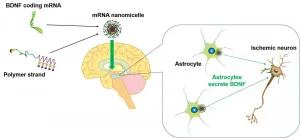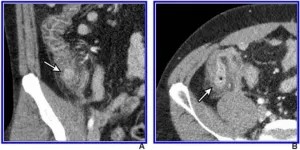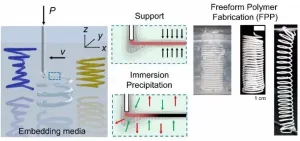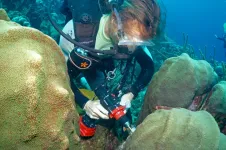A new agent for the brain diseases: mRNA
2021-04-08
(Press-News.org) Researchers from Tokyo Medical and Dental University (TMDU) demonstrate an mRNA delivery system that effectively produces BDNF protein in rat brain to protect neurons from ischemia
Tokyo - A lack of oxygen to brain tissue--known as ischemia--leads to the death of neurons, which results in stroke. Despite considerable research, there are currently no treatments that successfully prevent neuronal death. Now, Tokyo Medical and Dental University (TMDU) researchers have reported a way of delivering mRNA to produce a therapeutic protein that protects neurons. Their findings, demonstrated in rats, are published in Biomaterials.
Brain-derived neurotrophic factor (BDNF) is a protein that enhances the survival and function of neurons. However, the BDNF molecule is too large to cross the brain's protective barrier and is rapidly removed from the central nervous system, making it difficult for BDNF to make its mark as a treatment.
The researchers therefore devised a way of producing BDNF where it is needed most.
They designed a delivery system containing BDNF messenger RNA (mRNA), which is the information molecule needed to make BDNF. When the mRNA gets inside a cell, it can be used as a blueprint to make the protein.
Their system--known as an mRNA nanomicelle--is a tiny ball-like parcel of mRNA surrounded by polymer strands. The polymer protects the mRNA from molecules that might break it down and helps to disguise it from the immune system.
"As well as protecting the mRNA by providing containment, the polymer allows the release of the cargo to be controlled," study first author Yuta Fukushima explains. "By selecting polymers with particular properties, we can ensure the mRNA is released when and where it is needed."
The effectiveness of the mRNA therapy was tested on rats that had experienced brain ischemia. The nanomicelles were found to increase the survival of hippocampal neurons. In particular, the nanomicelles showed better effects when administered 2 days after the ischemia than when given immediately. This indicates that the nanomicelles extend the opportunity for providing effective treatment.
In addition, long-term therapeutic benefits were observed 20 days after ischemia when the mRNA nanomicelle was administered on both days 2 and 5. Treated rats showed better spatial memory than untreated rats in a maze experiment.
"We are very encouraged by the performance of our system," says study corresponding author Keiji Itaka. "Our experiments not only demonstrated that the mRNA nanomicelle could prevent neuron death, but also that the potential treatment window could be extended. We expect these findings to have a significant impact on the development of practical clinical treatments."
INFORMATION:
The article, "Treatment of ischemic neuronal death by introducing brain-derived neurotrophic factor mRNA using polyplex nanomicelle", was published in Biomaterials at DOI: 10.1016/j.biomaterials.2021.120681.
[Attachments] See images for this press release:

ELSE PRESS RELEASES FROM THIS DATE:
2021-04-08
Cycling at moderate intensity during dialysis could drastically improve the heart health of patients with kidney failure and result in significant savings for the NHS, according to new research by the University of Leicester supported by the charity Kidney Research UK and National Institute for Health Research (NIHR) Leicester Biomedical Research Centre.
Patients in the CYCLE-HD study were offered 30 minutes of moderate intensity exercise on a specially adapted bicycle during their regular dialysis sessions. Dialysis can lead to long-term scarring of the heart, which can accumulate over time and lead to heart failure. The study set out to examine ...
2021-04-08
Ensuring sustainability of crop and timber production would mitigate the greatest drivers of terrestrial wildlife decline, responsible for 40% of the overall extinction risk of amphibians, birds and mammals, according to a paper published today in Nature Ecology & Evolution. These results were generated using a new metric which, for the first time, allows business, governments and civil society to assess their potential contributions to stemming global species loss, and can be used to calculate national, regional, sector-based, or institution-specific targets. The work was led by the IUCN Species Survival Commission's Post-2020 Taskforce, hosted by Newcastle ...
2021-04-08
New Curtin University-led research has found climate change will have a substantial impact on global food production and health if no action is taken by consumers, food industries, government, and international bodies.
Published in one of the highest-ranking public health journals, the Annual Review of Public Health, the researchers completed a comprehensive 12-month review of published literature on climate change, healthy diet and actions needed to improve nutrition and health around the world.
Lead researcher John Curtin Distinguished Emeritus Professor Colin Binns, from the Curtin School of Population Health at Curtin University, said climate change has had a detrimental impact on health and food production for the past 50 years and far more needs to be ...
2021-04-08
A Curtin University study has found the introduced European honeybee could lead to native bee population decline or extinction when colonies compete for the same nectar and pollen sources in urban gardens and areas of bush.
Published in the 'Biological Journal of the Linnean Society', the research found competition between the native bees and the introduced European honeybee could be particularly intense in residential gardens dominated by non-native flowers, and occurred when the bees shared the same flower preferences.
Under these conditions, it would appear that European honeybees, being very abundant, and effective foragers, with the ...
2021-04-08
How can large amounts of data be transferred or processed as quickly as possible? One key to this could be graphene. The ultra-thin material is only one atomic layer thick, and the electrons it contains have very special properties due to quantum effects. It could therefore be very well suited for use in high-performance electronic components. Up to this point, however, there has been a lack of knowledge about how to suitably control certain properties of graphene. A new study by a team of scientists from Bielefeld and Berlin, together with researchers from other research institutes in Germany and Spain, is changing this. The team's findings have been published in the journal Science Advances.
Consisting of carbon atoms, graphene is a material just one atom ...
2021-04-08
As SARS-CoV-2 continues to spread in France, a thorough characterization of hospital care needs and of the trajectories of hospital patients, as well as how they have changed over time, is essential to support planning. This led scientists from the Mathematical Modeling of Infectious Diseases Unit at the Institut Pasteur and the University of Cambridge to develop a probabilistic model that can be used to analyze detailed patient trajectories based on 198,846 hospitalizations in France during the first nine months of the pandemic (from March to No-vember 2020). These findings were published in The Lancet Regional Health Europe on March 20, 2021.
This ...
2021-04-08
Leesburg, VA, April 8, 2021--According to an open-access article in ARRS' American Journal of Roentgenology (AJR), IV contrast-enhanced 2-millisievert CT (2-mSv CT) is comparable to conventional-dose CT (CDCT) for the diagnosis of right colonic diverticulitis.
"By mitigating concern of missed diagnosis of right colonic diverticulitis, our results further support the use of low-dose CT for suspected appendicitis," wrote first author Hae Young Kim from the department of radiology at Korea's Seoul National University Bundang Hospital. "To our knowledge," Kim et al. maintained, "this is the first study to formally measure the diagnostic performance of CT for right colonic diverticulitis."
Kim and colleagues' large pragmatic randomized controlled trial data included 3,074 patients ...
2021-04-08
Scientists of Tomsk Polytechnic University have created a decision support system (DSS) for dispatching personnel of electric power systems (EPS). The system allows dispatchers to quickly test their actions on the management of the EPS, to control and evaluate their consequences using a digital simulator in a regime faster than real time.
The article devoted to the research work is published in the IEEE Transactions on Power Systems (Q1, IF 6.074) academic journal, one of the most peer-reviewed journals in energy, energy technology, electrical engineering and electronics ...
2021-04-08
Fabrication of 3D freeform structures of thermoplastics involving overhang (non-anchored) structures is successfully showcased by fused deposition modeling (FDM) and direct ink writing (DIW), yet limited in terms of applicable materials and conditions of printing. 3D printing of freeform structures requires support materials that enable printing of thermoplastics in non-anchored locations.
In order to address the difficulty of freeform fabrication via extrusion-based printing, the use of microparticulate gels as embedding media has been widely explored. Such methods are collectively termed embedded 3D printing (e3DP).
In these demonstrations, ...
2021-04-08
Researchers from the University of Hawai'i (UH) at Mānoa, University of British Columbia (UBC), San Diego State University (SDSU), and elsewhere have created 3D molecular maps of bacteria, viruses, and biochemicals across coral colonies along with their interacting organisms such as algae and other competing corals. This allowed the team to discover specific microbial and viral functions that appear to be key components of the coral microbiome.
The study, published recently in Frontiers of Marine Science, used a novel combination of state-of-the-art molecular methods with cutting-edge 3D imaging techniques to create high-resolution molecular maps on coral reef organisms.
Healthy coral reefs ...
LAST 30 PRESS RELEASES:
[Press-News.org] A new agent for the brain diseases: mRNA





